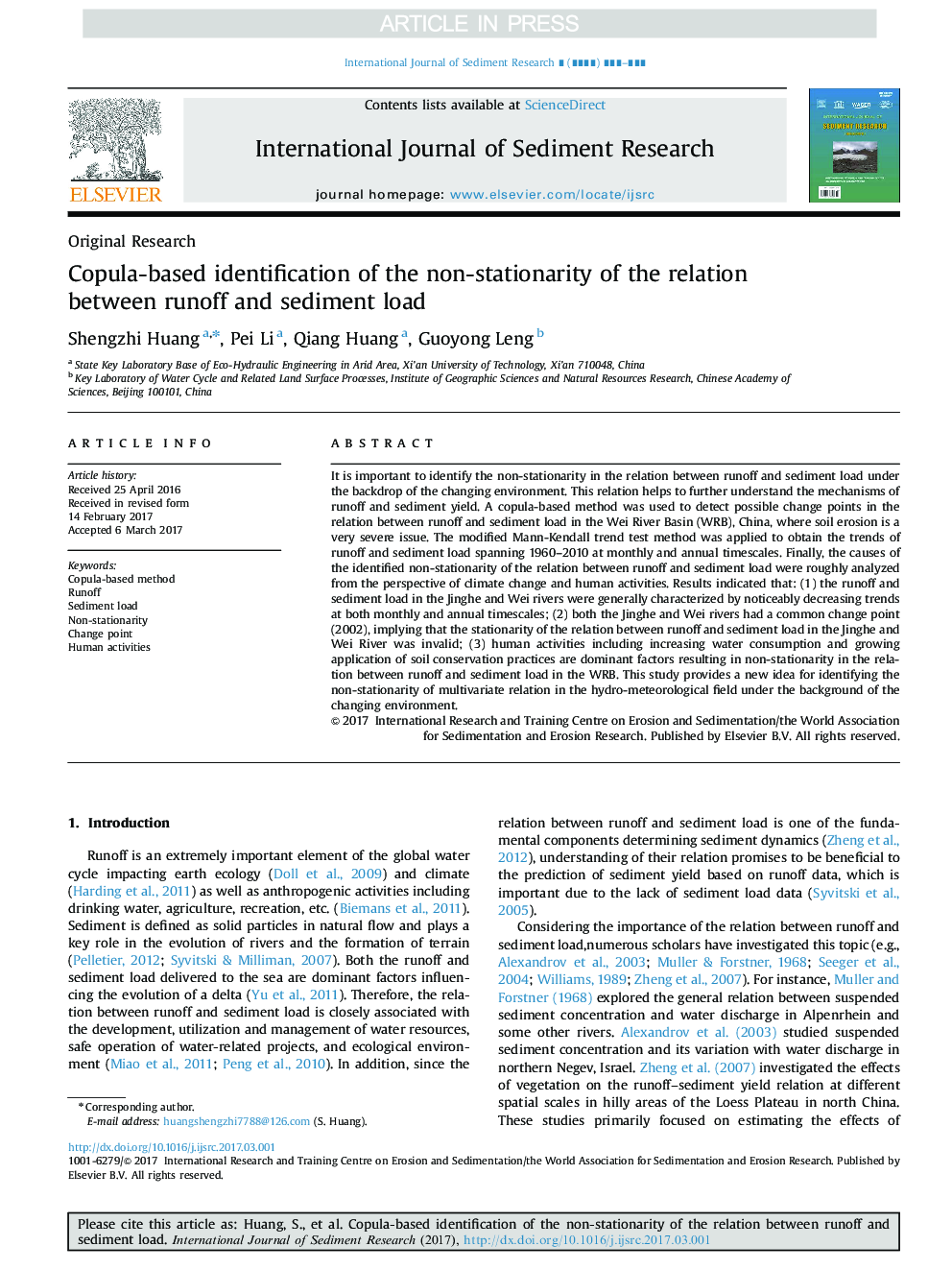| Article ID | Journal | Published Year | Pages | File Type |
|---|---|---|---|---|
| 8911178 | International Journal of Sediment Research | 2017 | 10 Pages |
Abstract
It is important to identify the non-stationarity in the relation between runoff and sediment load under the backdrop of the changing environment. This relation helps to further understand the mechanisms of runoff and sediment yield. A copula-based method was used to detect possible change points in the relation between runoff and sediment load in the Wei River Basin (WRB), China, where soil erosion is a very severe issue. The modified Mann-Kendall trend test method was applied to obtain the trends of runoff and sediment load spanning 1960-2010 at monthly and annual timescales. Finally, the causes of the identified non-stationarity of the relation between runoff and sediment load were roughly analyzed from the perspective of climate change and human activities. Results indicated that: (1) the runoff and sediment load in the Jinghe and Wei rivers were generally characterized by noticeably decreasing trends at both monthly and annual timescales; (2) both the Jinghe and Wei rivers had a common change point (2002), implying that the stationarity of the relation between runoff and sediment load in the Jinghe and Wei River was invalid; (3) human activities including increasing water consumption and growing application of soil conservation practices are dominant factors resulting in non-stationarity in the relation between runoff and sediment load in the WRB. This study provides a new idea for identifying the non-stationarity of multivariate relation in the hydro-meteorological field under the background of the changing environment.
Related Topics
Physical Sciences and Engineering
Earth and Planetary Sciences
Geochemistry and Petrology
Authors
Shengzhi Huang, Pei Li, Qiang Huang, Guoyong Leng,
